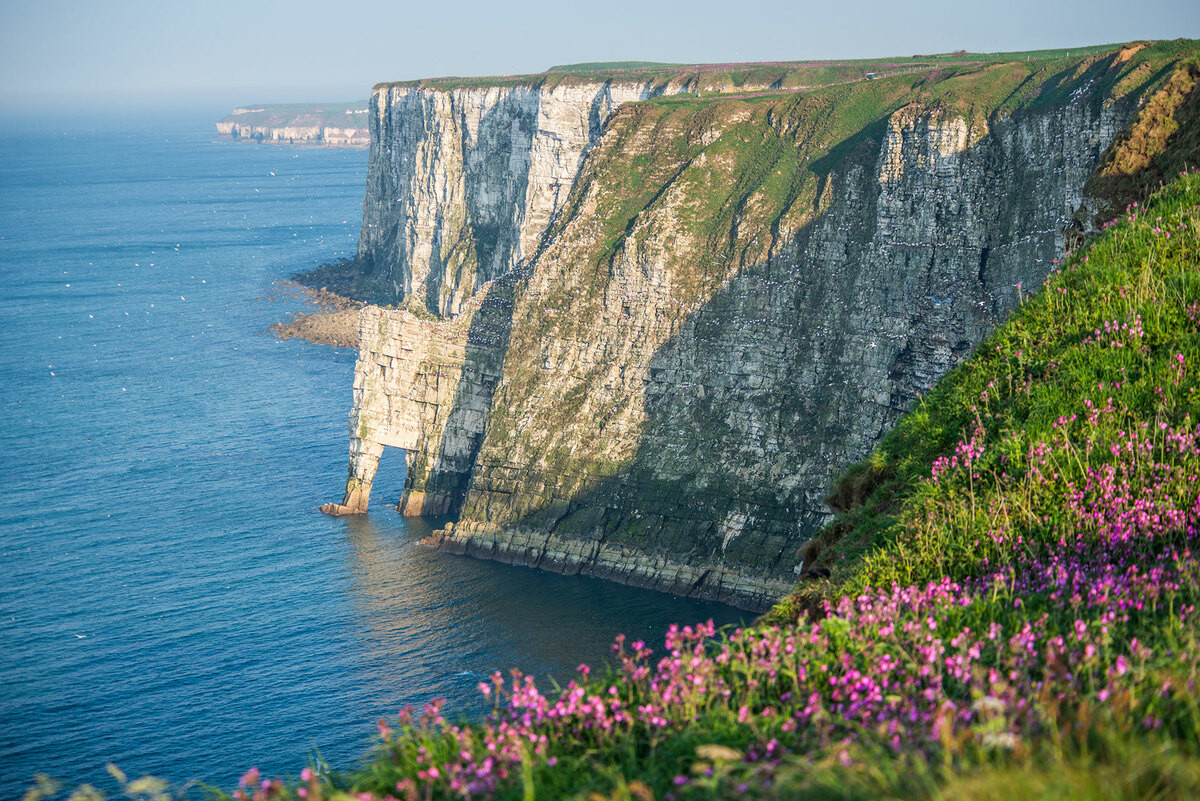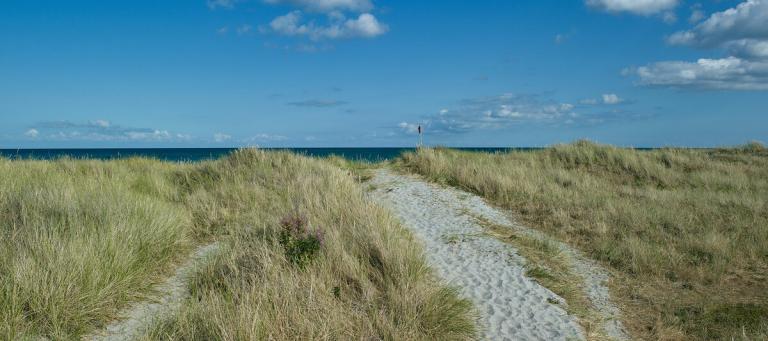
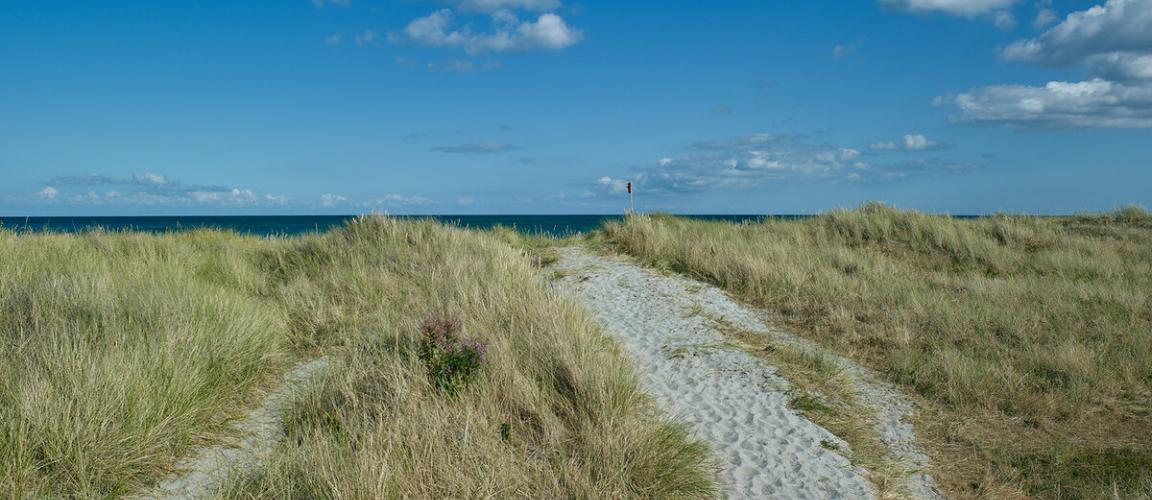
Our pick of the best UK beaches for wildlife spotting
What better way to blow away the cobwebs than with a bracing coastal walk that combines plenty of fresh sea air with a little wildlife spotting along the way. Here’s our pick of some brilliant spots that will most definitely allow you to indulge in both.
Best for bird spotting: East Head Beach, West Wittering
If you’re looking for a place to bathe or build sandcastles, you’re probably better off heading to the main beach at West Wittering, but if reconnecting with nature in a stunning natural environment is your priority, then East Head beach is the place for you.
This National Trust-owned and managed beach is a pretty sand dune spit on the eastern side of the entrance to Chichester Harbour. It’s backed by dunes and salt marshes that provide a habitat for many rare species of plant and animal life and is an excellent place for bird watching.
Thousands of wading birds, ducks and geese migrate to East Head Beach for the winter from places like Greenland, Iceland, Scandinavia and Siberia. During the summer, a different group of birds arrive from the South (some from as far as South Africa) to nest and raise young.
Skylarks nest in the marram grass that grows amongst the dunes, and ringed plover nest in the shingle at the north end of the beach and, at low tide there’s also a chance of spotting seals snoozing on the mudflats. As the sands are constantly shifting, the beach here is very fragile. Plus, many of the birds nest at ground level in the dunes and on the shingle, so be careful where you step and keep dogs to heel. The area is designated as a Special Site of Scientific Interest (SSSI), as well as a Ramsar Site because it’s a wetland of international importance.
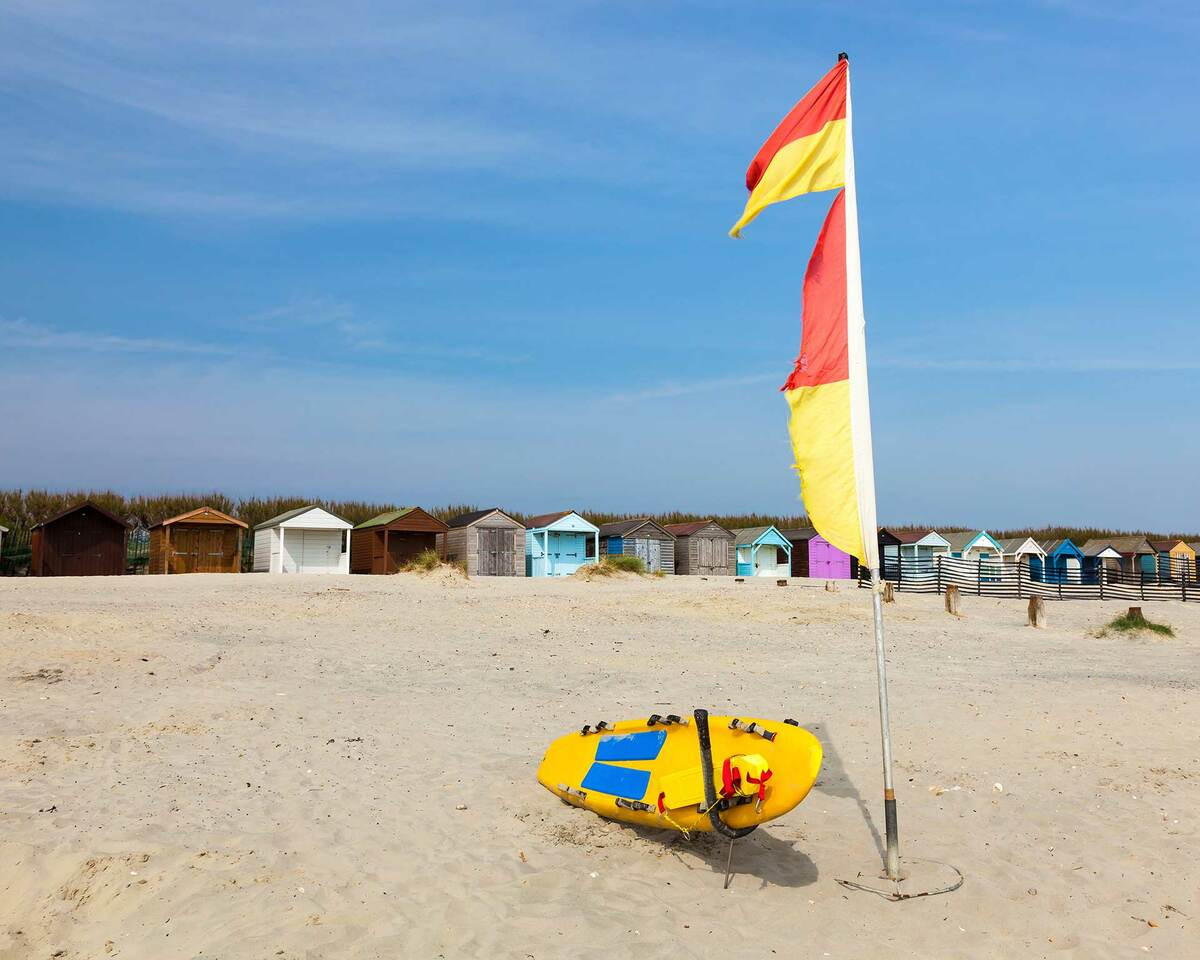
Bulging with biodiversity: Camber Sands, East Sussex
Camber Sands in East Sussex, close to the border with Kent, is one of the most loved holiday destinations on the South Cost of England. As well as being a holiday attraction, part of the western end of the dunes is a nationally important wildlife habitat and part of the Camber Sands and Rye Saltings SSSI. It’s also a valuable natural habitat for over 250 species of plants and animals, including a number of moths and butterflies, and birds such as snow bunting, stonechat, sanderling and hen harrier.
As the skylarks soar over your head, look down among the sprays of spiky marram grass, orange-berried sea buckthorn and sea rocket, and you may find the tracks of lizards and the occasional flash of a tail. There is also a myriad of invertebrate species, with the dunes being the only place in England where you can find the beetle, Bradycellus distinctus.
Along the shoreline you’ll find a treasure trove of razor shells, whelks’ eggs and mermaids’ purses. And, if you happen to be at the beach at dusk, you might be lucky enough to see a short-eared owl out hunting for its prey. Make sure to wear beach shoes for your adventures, as the spiky-spined weever fish buries itself in the sands here.
It’s advisable to keep to the paths over the dunes as the ecosystem is quite fragile and can be easily damaged by clumsy feet and boisterous dogs.
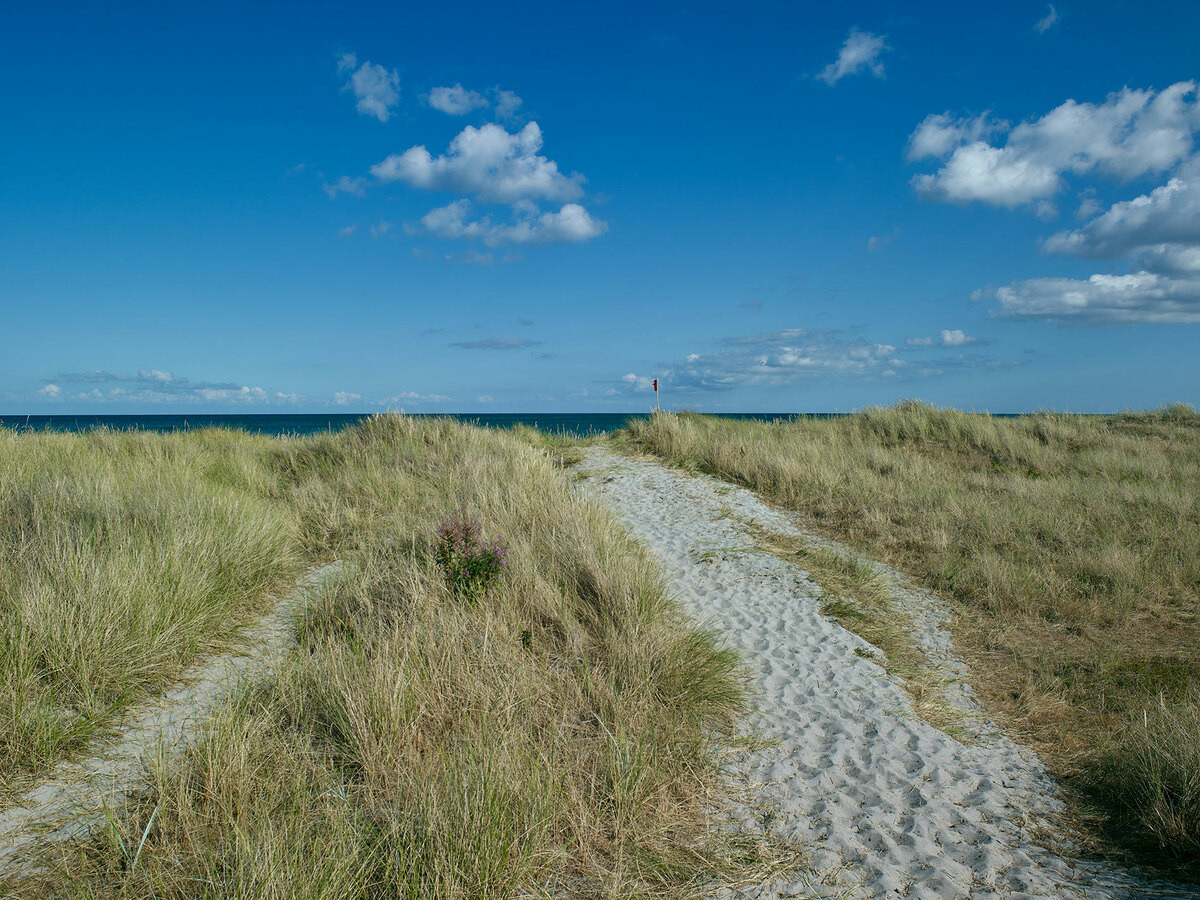
Superb for seals: Blakeney Point, Norfolk
Blakeney Point nature reserve is in the heart of North Norfolk’s Area of Outstanding Natural Beauty. It’s a 6.4km (4m) spit of shingle and sand dunes but also includes salt marshes, tidal mudflats, and reclaimed farmland.
The Point itself is something of a haven for grey seals because it’s relatively remote and undisturbed and contains none of their natural predators (such as killer whales). The seals can be seen all year round here but, between October and January year, they congregate in huge numbers to breed and produce pups.
The first grey seal pup was spotted at Blakeney Point in 1988 but only occasional pups were born there throughout the 1990s. However, numbers have increased each year until, in 2014, Blakeney Point became the largest grey seal colony in England and, in 2019, a record 3,399 pups were born on the reserve.
The best way to catch a glimpse of these fascinating sea mammals is on a boat trip from nearby Morston Quay and there are a handful of family-run businesses that run seasonal expeditions.
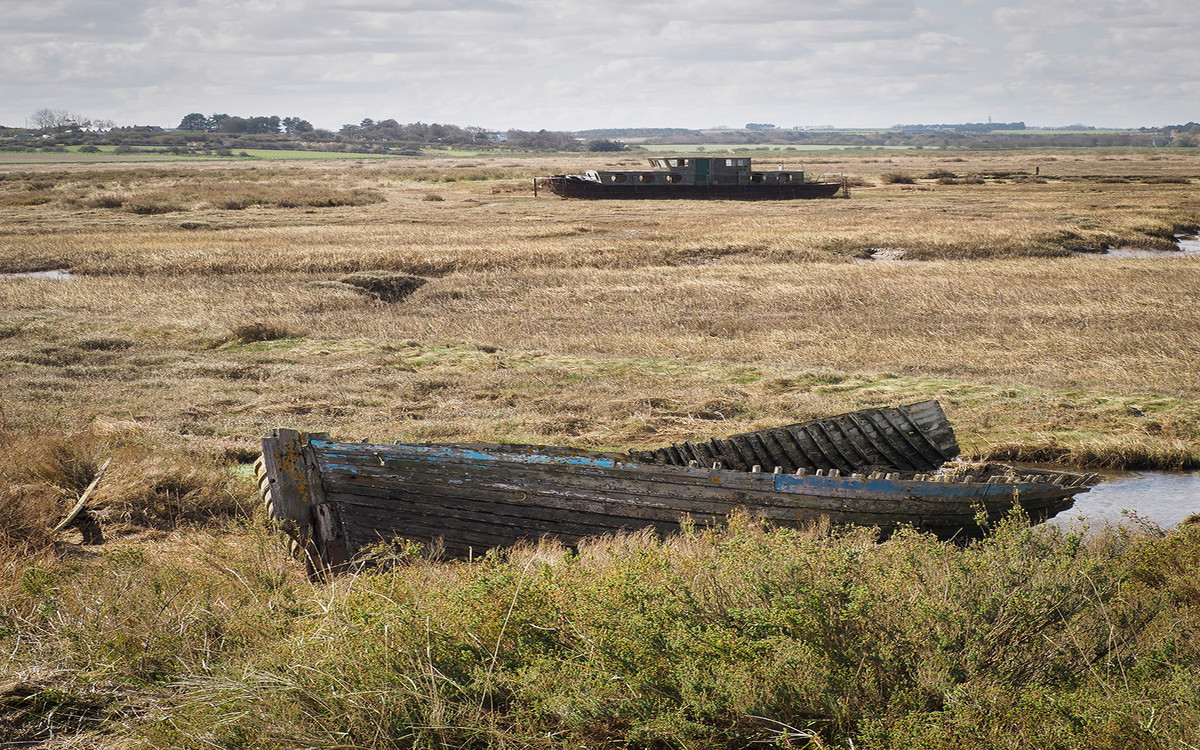
Discover dolphins: Porthgwarra Beach, Cornwall
One of the best beaches in England to see wild bottlenose dolphins is in West Cornwall, between Land’s End and Porthcurno. Shouldered by tall, white cliffs, secluded Porthgwarra Beach is typically Cornish: crystal-clear waters, pale sand and rugged cliffs.
The beach is actually privately-owned, but the public are permitted access. The slipway, which is now a big part of the cove, was built sometime in 1880 to give access from the hamlet to the sea. Around the same time, tunnels were dug by miners from St Just to provide easier access for fishermen and so that farmers could transport seaweed from the beach by horse and cart to fertilise their fields.
Although dolphins can be spotted at any time of year, you’re more likely to see them during the summer months when they hunt mackerel. Travelling in ‘pods’, they’re often seen breaching, bow-riding and thrashing their tails as they feed, and passengers on boat tours sometimes report these playful mammals coming close to the boat to socialise.
The most common species you’re likely to see are the bottlenose and common dolphin, but the Risso’s dolphin and harbour porpoise have also been reported here. And, if you visit between April and September, you may even glimpse a (completely harmless) basking shark – the second-largest shark in the world.
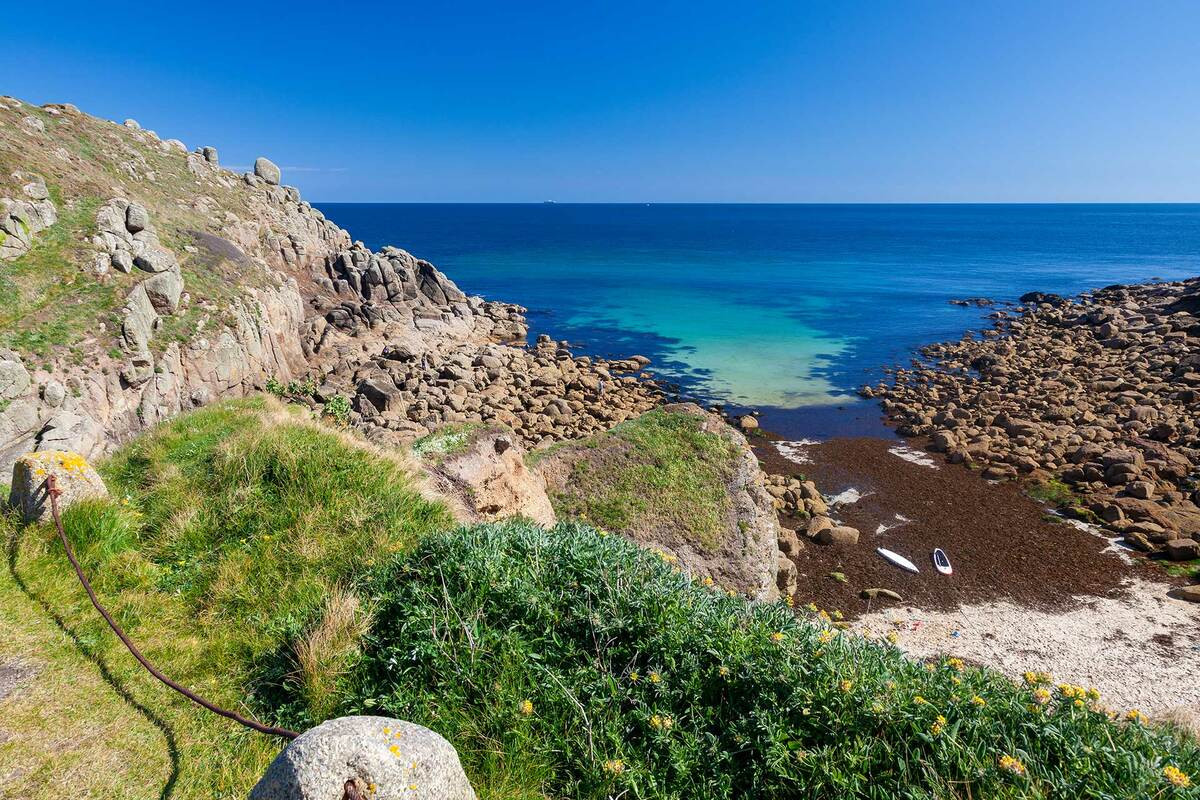
Keep your eyes peeled for puffins: RSPB Bempton Cliffs, Bridlington, Yorkshire
RSPB Bempton Cliffs is one of the truly unmissable British birdlife locations and the UK's largest mainland seabird colony. Between April and October, almost half a million seabirds cram onto rocky ledges high above the waves, and the sights, sounds and smells of soaring and swooping seabirds combined with the panoramic sea views is an unmissable experience.
There are currently around 580,000 breeding pairs of puffins in the UK, and with around half of those spread around just a few sites, the birds are currently an endangered IUCN ‘Red List’ species. The puffins at Bempton Cliffs don’t make burrows like their island counterparts - they use cliff crevices and small caves as natural burrows.
Between April and July, is your best chance to catch sight of the puffins and you may see them returning to the nest with sand eels hanging from their colourful beaks. Park by the RSPB Visitor Centre and walk along the path to the edge of the cliffs where you’ll find six purpose-built viewing platforms. The stations are well positioned, perched on the top of the cliffs and give wonderful close-up sightings of the seabirds, including the irresistible puffin. There are RSPB volunteers stationed at each who will help you spot the characterful birds, but a pair of binoculars will prove handy.
One puffin couple returns year after year to their cave-burrow conveniently within sight of the nearest and most accessible viewing point, “Grandstand”. The pair can often be seen together outside the cave entrance in late March or early April before their egg is laid.
We think one of the best ways to enjoy the British seaside is by admiring its natural beauty. Have we persuaded you to visit any of these fabulous wildlife hotspots?
